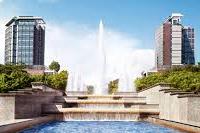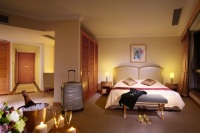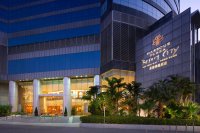Venue & Hospitality
Harbour Plaza Resort City
18 Tin Yan Road Tin Shui Wai
New Territories
Hong Kong
Conference Dates: September 18-19, 2017
Hotel Services & Amenities
- Audio/Visual Equipment Rental.
- Business Center.
- Business Phone Service.
- Complimentary Printing Service.
- Express Mail.
- Fax.
- Meeting Rooms.
- Office Rental.
- Photo Copying Service.
- Secretarial Service.
- Telex.
- Typewriter.
- Video Conference.
- Video Messaging.
- Video Phone.
- ATM.
- Baggage Storage.



Transportation
Driving Directions to
Harbour Plaza Resort City is a 30-minute drive from Tsim Sha Tsui Downtown and a 40-minute drive from Hong Kong International Airport.
HOTEL SHUTTLE BUS provides daily service to the Hong Kong International Airport at $100.
Hotel ⇒ Hong Kong International Airport ⇒ Hotel
Departs from Hotel Tower II (Via Hotel Tower I)
AM 6:00 / 7:00 / 8:00 / 10:00
PM 12:00 / 3:00 / 6:00 / 8:00 / 11:30
Departs from Hong Kong International Airport
AM 0:30 / 2:00 / 7:00 / 8:00 / 9:00
Route Map
About City
Hong Kong can mostly thank its colonial history and international harbour for the rich blend of cultures that give it its unique character. While the majority of the city’s population are Chinese speakers, simply walking the streets will expose you to a medley of Asian and European languages.
Chinese
Cantonese, a minority dialect of Mainland China, is spoken by 88 per cent of people in Hong Kong. Nonetheless, other Chinese dialects, such as Hakka, Taishanese and Teochiu are also present, as is Mandarin of course – China’s official dialect, which has become more widely spoken in Hong Kong since the reunification in 1997.
English
From Hong Kong’s establishment as a colonial port, through its period as a manufacturing hub, and up until its current role as an international financial centre, the city’s population has always looked outwards. As a result, English is widely spoken. Today, it is the language of preference in the government, business and tourism sectors. All official signs and public transport announcements, as well as most menus, are bilingual. As a visitor, you can expect to encounter minimal problems communicating in English as most taxi drivers, salespeople, tourism industry employees and police have reached competent levels of the language. In fact, many locals even pepper their Chinese speech with English words and phrases.
Hong Kong has a sub-tropical climate with distinct seasons. The only predictable weather events that could have a significant impact on your travel plans are typhoons.
Typhoon season begins in May and ends in November. When a typhoon is approaching, warnings are broadcast on television and radio. There are various degrees of warning signals issued by the Hong Kong Observatory, but when the no. 8 signal is in place, most businesses and shops close down and flights may be cancelled. There is a separate warning system for heavy rain.
